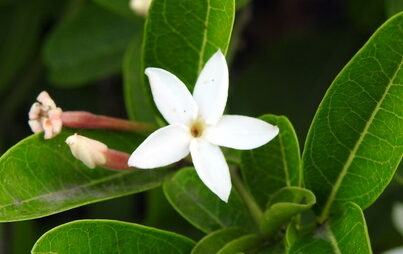Botanical name: Carissa carandas | Hindi: करौंदा | Marathi: करवंद | English:Bengal-currants
About
The Bengal currant, Carissa carandas, is a spiny, evergreen shrub or small tree reaching 2-5 meters tall. Its dense branches are adorned with glossy, elliptical leaves, 2-6 cm long, with a vibrant green color and a leathery texture. Small, white flowers with a sweet fragrance cluster at the branch tips, later transforming into the Bengal currant fruit. These oval-shaped fruits, measuring 1-2 cm in diameter, possess a thin, smooth, red or orange skin and a juicy, tart flesh enclosing one to four small seeds.
Interesting Facts

Medicinal Uses: Despite their small size, Bengal currants pack a punch of medicinal properties. The fruit is rich in vitamin C, antioxidants, and dietary fiber, contributing to immune system health, digestion, and blood sugar control. Traditional medicine uses various parts of the plant for their healing properties. The leaves are used for wound healing, skin conditions, and digestive issues. The bark is known for its anti-inflammatory and anti-bacterial effects, while the roots are used to treat diarrhea and dysentery. Research is ongoing to explore the full potential of Bengal currants in modern medicine.

Environmental Impact: Bengal currants contribute to a healthy environment in several ways. They are drought-tolerant and can thrive in poor soil conditions, making them suitable for sustainable agriculture. Additionally, their spiny branches provide shelter and nesting sites for birds. The deep root system helps prevent soil erosion and promotes soil health. By promoting biodiversity and sustainable land use, Bengal currants contribute to a greener future.

Food & Culinary usage: Don’t let their size fool you; Bengal currants are culinary chameleons. Their tart flavor shines in chutneys, pickles, and relishes, adding a zing to savory dishes. The fruit can be enjoyed fresh, dried, or preserved, offering a burst of flavor and vitamin C. In recent years, chefs have explored the fruit’s potential in desserts, jams, and even beverages. Bengal currants’ versatility makes them a valuable ingredient in kitchens worldwide, inspiring culinary creativity and adding a unique tang to various dishes.

